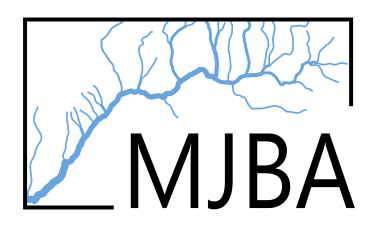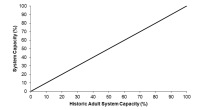Natural Limitations and Bull Trout
mbakken
View all records in the stressor response library
Species Common Name
Bull Trout
Latin Name (Genus species)
Salvelinus confluentus
Stressor Name
Natural limitations
Specific Stressor Metric
Historical adult density
Stressor Units
historical adult system capacity (%)
Vital Rate (Process)
Historic adult density
Geography
Alberta foothills watersheds, excluding National Parks
Detailed SR Function Description
Native trout are naturally limited by other environmental variables besides water temperature. These limitations occur at varying spatial scales and include both biotic (e.g., productivity, fish community, etc.) and abiotic features (amount of woody debris, substrate composition, water velocity, groundwater input, natural sediment loads, natural flow regimes, etc.). Further, persistence in suitable, but isolated habitats may be limited if connectivity with neighbouring populations is naturally restricted and supplementation or re-colonization following local population decline or extirpation is not possible. These naturally limiting factors mean that a specific native trout population may never and would not be expected to achieve the reference system capacity of 100%, which is set using the most abundant, pristine native trout populations in the province. Understanding the influence of natural limitations on native trout populations today is difficult due to the confounding spatial and temporal effects of human disturbance and harvest. However, the relative status of native trout prior to extensive human disturbance and harvest (i.e., early 1900s) was assessed by the Historic Adult Density (HAD) FSA score, which will be used as a surrogate measure of natural limitations within each watershed in the species historic range. The HAD score is ranked from 1 (very low native trout density) to 5 (very high native trout density), but for this purpose was converted to a percentage-based natural limitations value. It was assumed there is a linear relationship between system capacity and natural limitations (Figure 1).
Function Derivation
Expert opinion
Transferability of Function
This function was developed and applied to Bull Trout, Athabasca Rainbow Trout, and Westslope Cutthroat Trout. Due to the generalizable nature of the 1:1 relationship, it could be applied anywhere where there is baseline data on the natural carrying capacity of the watershed.
Source of stressor Data
The natural limitations % was based on Historic Adult Density FSA score within the spatial unit of interest (i.e., HAD 1 = 10%, HAD 2 = 35%, HAD 3 = 60%, HAD 4 = 85%, and HAD 5 = 100%). There is no historic (i.e., >100 years) fisheries survey data; therefore, anecdotes, photographs, local environmental knowledge (LEK), traditional environmental knowledge (TEK) and information on fish barriers were used to inform HAD FSA scores. This included historical accounts from warden reports and angler interviews. Please note, these natural limitations rankings should only reflect limitations other than temperature.
Function Type
continuous
Stressor Scale
linear
References Cited
Government of Alberta. 2024. Natural limitations stressor-response function for Bull Trout, Athabasca Rainbow Trout, and Westslope Cutthroat Trout. Environment and Protected Area Native Trout Cumulative Effects Model.
File Upload
Stressor Response csv data
Data_BLTR_natLimit.csv
(160 bytes)
| Natural Limitations (%) | Mean System Capacity (%) | SD | low.limit | up.limit |
|---|---|---|---|---|
| 0 | 0 | 0 | 0 | 100 |
| 20 | 20 | 0 | 0 | 100 |
| 40 | 40 | 0 | 0 | 100 |
| 60 | 60 | 0 | 0 | 100 |
| 80 | 80 | 0 | 0 | 100 |
| 100 | 100 | 0 | 0 | 100 |
Stressor Response Chart

